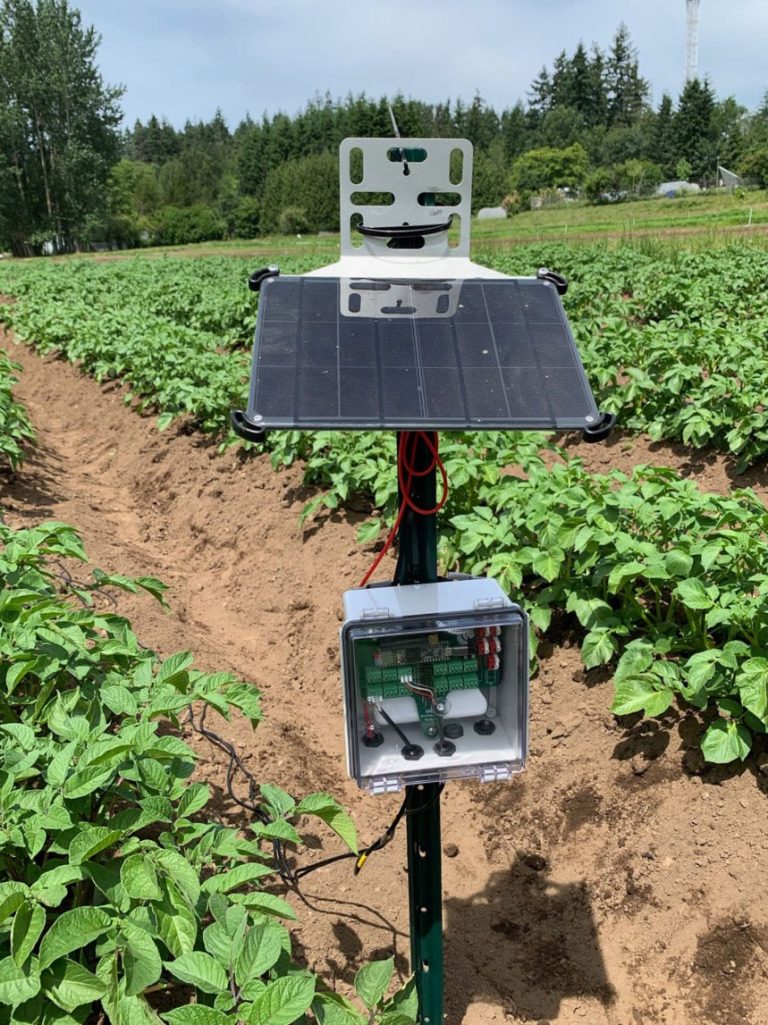Living Laboratory for Water Sustainability at UBC Farm
Project Lead
Mark Johnson, Professor, Institute for Resources, Environment and Sustainability (PI)
Funding
UBC Campus as a Living Laboratory Programme
About the Project
The project will develop a water innovations node for UBC’s Campus as a Living Laboratory initiative to conduct water monitoring and evaluate water use reduction strategies to minimize the water footprint of agriculture at UBC Farm and support UBC’s Water Action Plan. The project will increase the capacity of UBC Farm as a leading living laboratory for research, teaching and learning on water sustainability with academic, public sector and industrial partners. The project will implement new, smart, integrated water and climate monitoring technology at UBC Farm. This will enable living-lab based research to develop water conserving strategies and conduct innovative research across the food-energy-water nexus. The project will also inform best practices on water management and irrigation for urban agriculture and climate change, which can be scaled across campus to reduce UBC’s water footprint, and serve as a focal node for research related to water use in the regional agrifood system.
Project Progress
In 2019, Mark Johnson and his team of undergraduate work-learn students and research assistants from the Faculties of Science (Environmental Science) and Applied Science (Engineering Physics) have developed the emerging water innovations node for UBC’s Campus as a Living Laboratory initiative. Mark and his team have developed a robust data pipeline with water use and related data (e.g., climatic drivers) flowing from farm fields and the wash stations to the cloud using an Internet of Things approach. These data are required in order to accurately determine the water footprint of individual crops produced at UBC Farm. The method we developed to continuously monitor and transfer the field and post-harvest water use and climatic data in real time is highly innovative, and represents essential baseline information from which UBC Farm can develop more sustainable whole-farm water management plans. To continue these efforts in 2020, Mark and his team will install seven additional transmission nodes and sensors for improved data density of UBC Farm water use and implementation of a smart irrigation system.

Figure 1. Data collection “Node” in potato field.
In June 2018, the water sustainability node of Campus as a Living Laboratory was established through funding from the UBC Sustainability Initiative (USI). A suite of sensors were deployed at the UBC Farm to establish the baseline and a methodology to continuously measure water use in production fields and water used to wash harvested crops prior to sale. Sensors were also installed to examine site-specific soil moisture dynamics and climatic conditions. Over the ensuing year, a range of data collection strategies were explored, resulting in the development and deployment of a custom data acquisition “ecosystem” at UBC Farm in late June 2019.
We used small solar panels and rechargeable batteries to power four autonomous data collection “nodes” in UBC Farm production fields (Figure 1), and installed a fifth node at the Harvest Hut. We deployed water flow monitoring equipment in drip irrigation lines, in sprinkler irrigation standpipes, and on nine separate water usage points at the UBC Farm harvest hut. We deployed soil sensors in dialogue with the farm operations manager to ensure that the data obtained would be “actionable” (e.g., by enabling efficiency assessment of current irrigation strategies). This resulted in a modified plan for sensor installation in which we placed soil sensors within and below the root zone to determine if current irrigation practices are sufficient to elevate soil moisture within the root zone to desired levels while avoiding excessive leaching of water below the root zone. Each node was connected to multiple sensors, with data streaming from nodes to a cloud-based database and on-line visualization platform.
Over the 2019 summer growing season, these efforts have grown into a robust data pipeline with water use and related data (e.g. climatic drivers) flowing from the farm fields and the wash stations to the cloud using an Internet of Things approach. Those data are required in order to accurately determine the actual water footprint of individual crops produced at UBC Farm, where the water footprint represents not only the water used by field crops during the growing season but also the water needed to make the produce marketable (i.e., washed and prepared for consumption). The method we developed to continuously monitor and transfer the field and post-harvest water use and climatic data in real time is highly innovative, and represents essential baseline information from which UBC Farm can develop more sustainable whole-farm water management plans.
Next Steps
During the 2019 growing season, we recognized the importance of deploying a denser network of sensors in order to better represent the range of water use at UBC Farm in order to provide crop-specific water footprint measurements as a baseline against which strategies to reduce water use can be evaluated. During 2020 we plan to install seven additional transmission nodes for additional sensors and nodes for improved data density of UBC Farm water use and implementation of smart irrigation system.
Data Acquisition: Scaled to Fit
Our 2019 efforts have resulted in the development of a data acquisition platform from which we can readily scale to measurements across all of UBC Farm and other irrigated landscaping maintained by UBC throughout the Vancouver campus or in cooperation with place-based UBC units such as the UBC Botanical Garden, the Nitobe Memorial Garden, and the Biodiversity Research Centre. Importantly, we developed the data analytics workflow in a way that will enable scaling on the Campus as a Living Lab concept so that students, faculty and staff can readily deploy sensors and new nodes that can be configured for particular needs, including data collection for courses, research projects, and other monitoring needs such as water used for landscaping across campus.